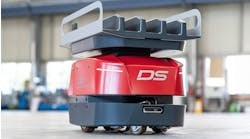Pittsburgh International Airport announced plans for Neighborhood 91, the world’s first development to condense and connect all components of the additive manufacturing/3-D printing supply chain into one powerful production neighborhood concept.
Neighborhood 91, developed in conjunction with the University of Pittsburgh, is the first development of the 195-acre Pittsburgh Airport Innovation Campus and will be built adjacent to the airport terminal and runway. Argon gas supplier Arencibia – has committed to be the anchor tenant.
“The Pittsburgh region has always been a world leader in manufacturing,” said Allegheny County Executive Rich Fitzgerald. “Now that industry has evolved into additive manufacturing and 3-D printing, and through Neighborhood 91, we have laid the groundwork to become the global epicenter. The neighborhood concept will create enormous efficiencies but just as important is leveraging our region’s universities, which will provide necessary research and development and fuel the workforce to fill these jobs.”
The name Neighborhood 91 is based on Pittsburgh’s 90 distinct neighborhoods with the 91st being a key component to additive manufacturing into the future. Construction will begin next year.
“Part of our vision as an airport is to advance the region’s role as a world leader,” said Pittsburgh International Airport CEO Christina Cassotis. “Additive manufacturing is looking for a place to call home and no one has made that happen – until now. The Pittsburgh region is a natural fit based on its history and its assets of today. And our airport is leading the way to get it done along with our university partners.”
The University of Pittsburgh is a key partner in the development of Neighborhood 91 – both for its research and development and workforce development. The university’s dual strengths of applied additive manufacturing and supply chain research in addition to piloting programs to augment the professional pipeline help fuel the neighborhood concept.
“Neighborhood 91 brings together the kind of collaborative environment needed to lead in today’s competitive advanced manufacturing economy,” said University of Pittsburgh Chancellor Patrick Gallagher. “It combines the region’s strength in additive manufacturing and advanced materials industries with the intellectual capital of its world-class research universities.”
Neighborhood 91’s first tenant – Arencibia – has already signed up. Arencibia is the industry leader in recycling gases throughout the aerospace and additive manufacturing supply chain, creating more efficiencies and saving money for companies.
“The Neighborhood 91 model is innovation at its core: marrying technological, commercial, and public-private collaboration to fundamentally change the industry,” said Joe Arencibia, President. “This is something that isn’t happening elsewhere and we are excited to be the foundation upon which the Neighborhood is built.”
The Neighborhood 91 concept is based on shared capital resources at the core of the development. It will house a complete end-to-end ecosystem offering:
- Powder, parts, post-production, testing, and analysis
- Communal powder storage facilities
- Efficiencies in production/post-production and delivery
- Tenants’ clients cost savings from on-demand printing
- Reduced transportation costs
- Airport access
- And perhaps the most important, argon, helium, and other noble gases, which are essential elements of additive manufacturing, reaching up to 60 percent of additive manufacturing costs.
As part of Neighborhood 91, the airport is planning to construct a second microgrid to power the development to further increase cost savings for tenants. The airport is in the process of developing its first microgrid to power the terminals and airfield.
The Neighborhood campus concept will contain all the elements of the additive manufacturing supply chain in one concentrated place, including an onsite communal supply of powder, a proposition too expensive for most in the industry on their own.
Officials estimated that manufacturing lead times will shrink by 80 percent and transportation costs will shrink by even more.
For more information, visit www.Neighborhood91.com. Read more about the development announcement from Blue Sky News here.











